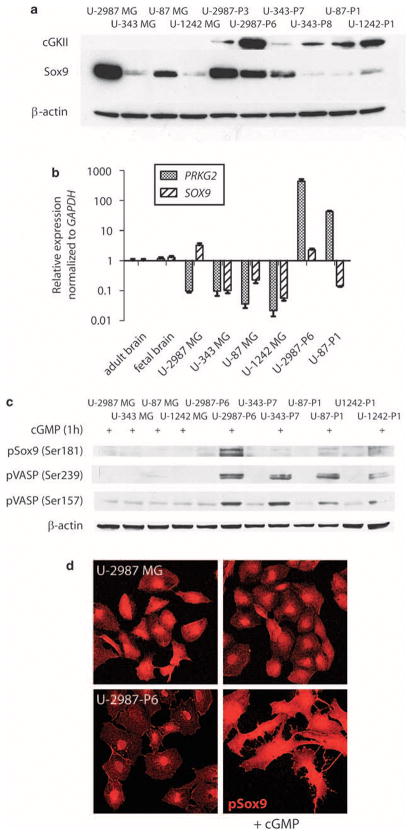Figure 2.
(a) Western blot of cGKII (only showing the specific 86 kDa band) and Sox9 protein expression in human glioma cell lines (U-2987MG, U-343MG, U-87MG and U-1242MG) and clones transfected with Prkg2 from U-2987MG (U-2987-P3 and U-2987-P6), U-343MG (U-343-P7 and U-343-P8), U-87MG (U-87-P1) and U-1242MG (U-1242-P1) human glioma cell lines (after four passages in culture). (b) Real-time PCR showing relative mRNA expression levels of PRKG2 as well as SOX9 in glioma cell lines compared with a normal human adult brain RNA. The expression levels are also compared with total RNA from normal human fetal brain and two of the Prkg2-transfected cell lines U-2987-P6 and U-87-P1. (c) Western blot showing phosphorylated Sox9 (Ser181) and both phosphorylated VASP residues (Ser 239 and Ser157) in untransfected and Prkg2-transfected glioma cell clones after 1 h of treatment with 8-pCPT-cGMP (250 μM) compared with β-actin loading. (d) Immunostaining of pSox9 (Ser181) in the glioma cells (U-2987MG and U-2987-P6) with or without 4 h of cyclic guanosine monophosphate (cGMP) analog (250 μM) treatment.

